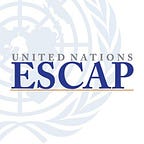What we know from pushing for a healthy environment in Bhutan
Environment and Development
By Solene Le Doze and Acacia Jennings
What’s the recipe for cooking up outstanding policies? Policy practitioners the world over have strived to get the right people in the room and stay abreast of the latest research.
In Bhutan, an exercise to realize a healthier environment led ESCAP to learn important lessons in supporting environmental policies in other countries.
The National Environment Commission (NEC) of Bhutan requested support from ESCAP on revising the 1998 National Environment Strategy (NES) of Bhutan.
This led to the development of The Middle Path: National Environment Strategy of Bhutan 2020 (NES 2020). The strategy, that responds to Bhutan’s specific circumstances and unique vision of environment and sustainable development was launched on 4 June 2020, under the Patronage of the Queen of Bhutan. Its vision is “a healthy and sustainable environment for present and future generations in pursuit of Gross National Happiness.” It provides an overarching framework for all existing environmental policies of Bhutan, with priority areas linked directly to the United Nations 2030 Agenda for Sustainable Development.
Here are the 6 lessons we learned from this important exercise.
1. Cooperation is key. The NES 2020 is a model of cooperation and the result of a transparent multi-stakeholder policy development process, first at the UN level, through the active support from the UN Resident Coordinator in Bhutan, the UN Development Programme, which provided technical and financial support, as well as from the UN Environment Programme. Engaging Bhutan’s National Environment Commission (NEC) Task Force and associated members, composed of representatives of various Ministries, civil society organizations, private sector and United Nations Agencies was also critical to ensure the development of a holistic, realistic strategy as well as for ensure buy-in for its implementation.
Key success factors in the policy development process are detailed as per the tradition stages of policy development below but can be summarised as follows: 1. Facilitating consensus development on the scope of the strategy, 2. Ensuring multi-stakeholder participation and 3. Ensuring flexibility and adaptability.
2. Give all a seat at the table. In understanding citizens’ needs, engaging multi-stakeholder participation was important to ensure that the strategy was relevant and would be bought in by most once approved. This was achieved through involving civil society and representatives of the private sector in the NEC Task Force. Consultations with elected chiefs of villages were also conducted in Dzongkha to ensure that the revised strategy corresponded to their priorities and overall successful engagement at the local and regional levels.
3. Do your homework. In terms of policy research, the initial step — conducting an in-depth environmental policy review — was critical in understanding the scope of the Strategy. It was effective to have an ESCAP team that combined both international expertise on environmental policy and local expertise to provide active follow-up with key partners and access the information that does not exist online.
4. Ask the experts. For developing the policy, workshops engaging the NEC’s Task Force and associated members were key to ensure that the strategy covered all existing policies, identified gaps and synergies in the policy landscape and suggested the appropriate government organizations to lead the implementation of the strategy in different areas. It was also important to remain flexible and adaptable throughout the process, for facilitating consensus on the scope of the strategy and managing inevitable contradicting expectations as the project progressed.
5. Leadership matters. To support the approval mechanism, the UN Resident Coordinator’s support was critical for engaging with other UN Agencies and for ensuring legitimacy. A strong understanding of the approval process for new national strategies and in particular the stringent criteria of the National Gross Happiness Index was key. Further, numerous reviews of strategy drafts by the Task Force and the NEC contributed to the development of a solid strategy swiftly approved by the Cabinet.
6. Communicate effectively. Finally, regarding communication, a high-level launch — with participation from the Executive Secretary of ESCAP, the Chairman of the National Environment Commission, the UN Resident Coordinator and the UNDP resident representative — was organized under the patronage of the Queen, on the day that coincides with her birthday as well as the day on which World Environment Day is celebrated in Bhutan, for maximum visibility. A press release was issued with a wide reach into the national press. In order to support maximum outreach at all levels, both the full strategy and its summary have been translated from English to Dzongkha.
These lessons learned could be applied by ESCAP in providing support to other countries in developing national environment policies.
